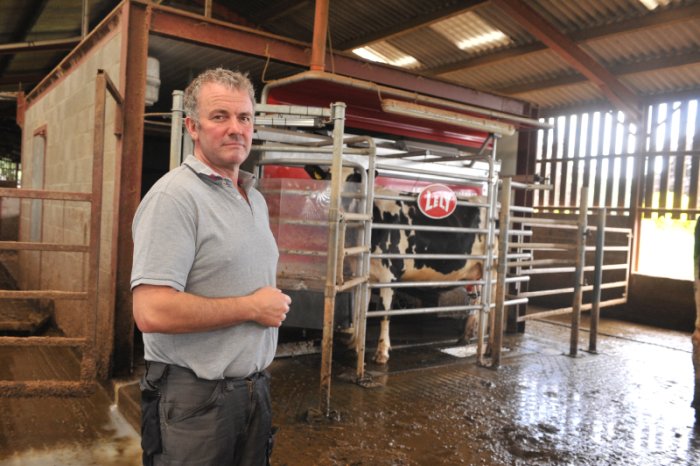
A one-hit approach to treating lameness in a robotically-milked dairy herd is set to provide valuable information to help producers improve cow foot health.
Like many dairy farmers, Russell Morgan has been battling digital dermatitis in his housed herd of 170 high yielding Holsteins at Graig Olway, Monmouthshire.
Digital dermatitis is one of the most common lameness issues found in robotically-milked herds.
Mr Morgan is implementing the AHDB Healthy Feet Programme, aiming to reduce his current incidence rate to under 10%.
Based on current lesion data, he is opting for a ‘blitz’ treatment approach.
Data from the ongoing project will be shared with farmers at a Farming Connect open event at Graig Olway on 24 March.
Gwenan Evans, Farming Connect dairy technical officer, says information gleaned from monitoring treatments will create the first case study of its kind within a robotic herd.
The outcomes will also be of benefit to other dairy farmers to whether they are in a robotic system or not.
Mr Morgan hopes that by reducing lameness levels and improving cow comfort, milk yield will increase and cow welfare enhanced further.
Also under the spotlight is the farm’s slurry storage capacity and measures that can be taken to alleviate pressure on this infrastructure.
This is one of the main barriers to Mr Morgan installing a fourth milking robot and increasing his cow numbers by 50.
Current slurry storage capacity would be insufficient to hold slurry generated by a further 50 animals and this is preventing him proceeding with expansion plans.
But, working with Farming Connect and Eoin Murphy of ADAS, who is a speaker at the March open event, Mr Morgan will examine ways of reducing clean water runoff into the slurry storage.
Mr Murphy will also lead discussion on considerations for site selection and meeting planning and building warrant regulations.
“Having adequate and well-maintained on-farm slurry storage with the capacity to hold six months’ worth of slurry enables farmers to target natural manure applications to match with crop nutrient requirements, rather than when storage reaches its limit," he said.
